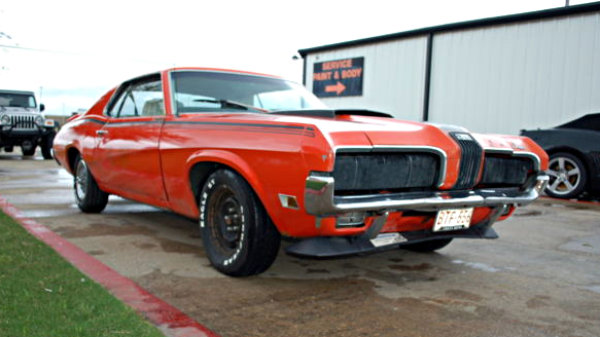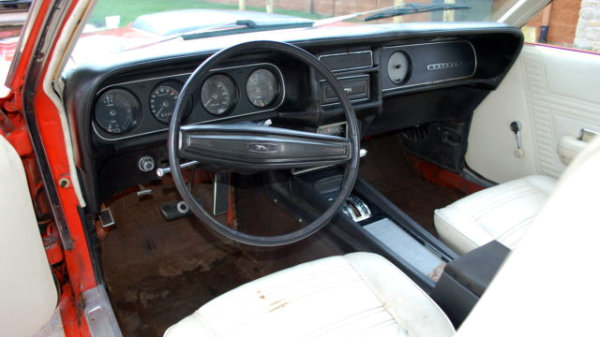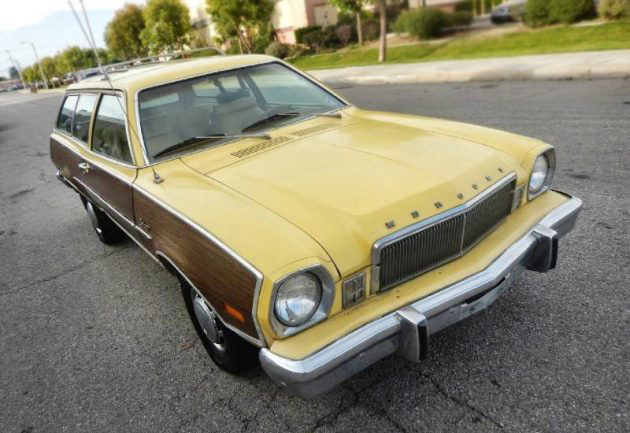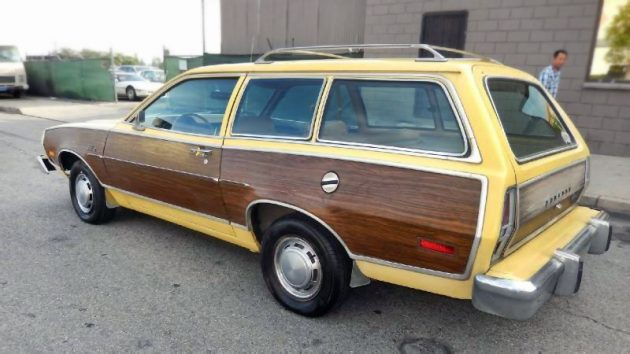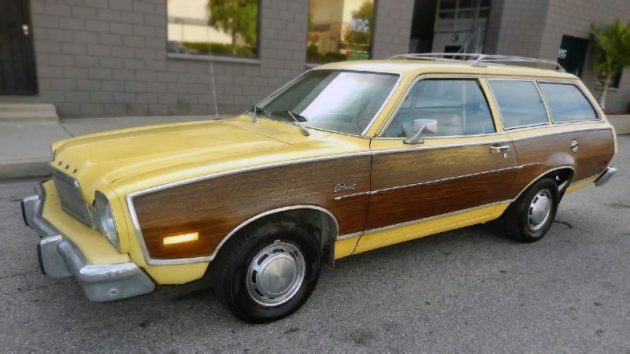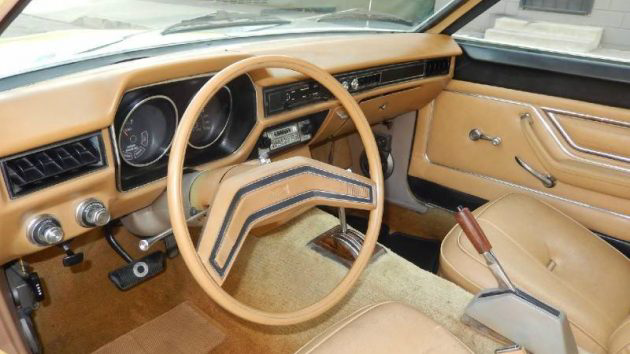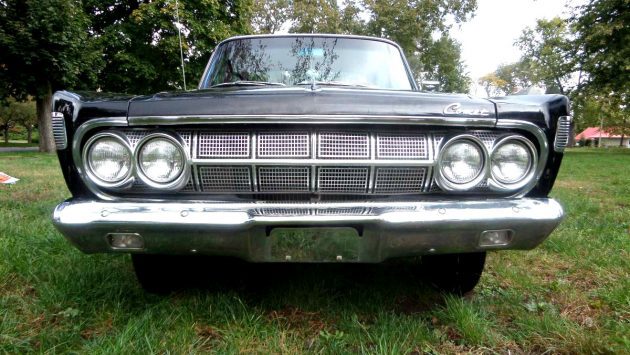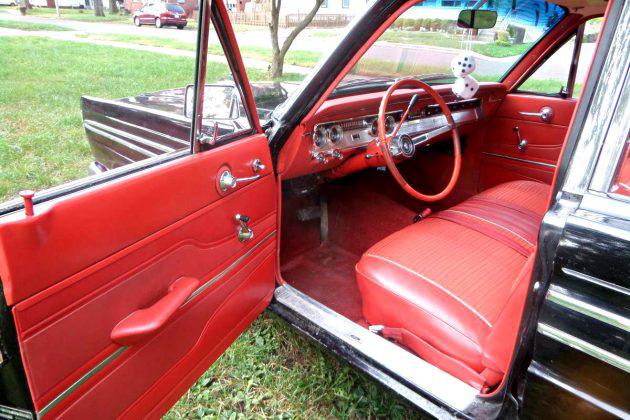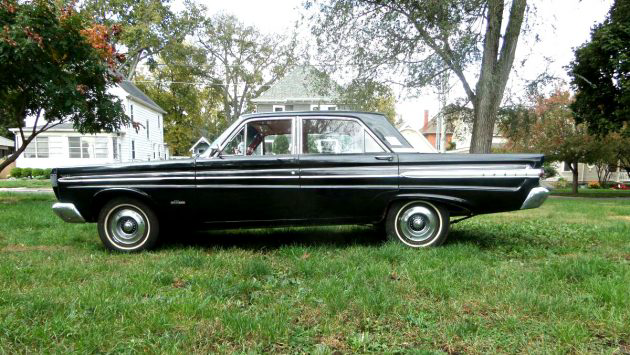1954 Mercury Sun Valley, from factory sales literature.
Clear tops were not all that new to the automotive world when the 1954 Ford Crestline Skyliner hit the showroom floor. Though the hardtop is generally considered the first mass-produced regular production car with a Plexiglas roof panel, it was actually the same-year Mercury Sun Valley that left the assembly line first–Ford just outsold it.
As mentioned, FoMoCo used Plexiglas, tinted blue-green (visually, it’s green), measuring one quarter-inch thick. The plastic was set into a rubber gasket, inserted into the rest of the roof, and surrounded by polished stainless steel. The transparent piece sat directly over the entire front seat. Structurally, one might think it would be a hindrance, but so long as all four wheels were still on the ground, there wasn’t much of a difference, as Ford used the beefed up convertible chassis.
The new models were advertised as a novel way to view the countryside; a more panoramic view, or certainly an advantage in viewing overhead traffic lights. Of course, the next thought to cross one’s mind might be the increased heat issue. To this, both Ford and Mercury claimed that the interior temperatures would increase only slightly, perhaps a nominal five degrees. In a Special Interest Autos November-December 1976 interview with designer L. David Ash, he claimed that “60 percent of the sun’s heat rays and 72 percent of the glare” were blocked by the tint. All the same, both companies offered a snap-in “aluminized nylon” shade to block out the world above.
The 1954 production run culminated with 13,344 Skyliners and 9,761 Sun Valleys. Then the trouble started. Rumors began to quickly circulate of the tendency for the interior to become sauna-like during the summer months, and even with the interior shade in place, the temps rose above the factory claims.
In time for the 1955 model year, Ford nixed the Crestline in favor of the Fairlane, thus moving the “bubbletop” Skyline model into the more popular Crown Victoria models of the mid-Fifties. Also introduced with the Fairlane was the “basket handle” chrome trim. Of little structural value, it’s actually hollow, and it’s where–on the Skyliner–the removable sun shade could be stored when not in use. For the 1954 model year, the shade would have to be stored elsewhere. There was also a change to the shade, in that a zipper ran down the middle so that half the Plexiglas top could be exposed.
Unfortunately, sales began their downward spiral at the rate of a lead brick in a pond. Ford’s 1955 Skyliner production total was just 1,999 units, while Mercury’s wasn’t far behind with 1,787. Mercury killed the bubbletop after the 1955 model year, but Ford continued it in 1956, producing just 603 units. Granted, 1956 wasn’t the best model year for any manufacturer, but when comparing bubbletop production numbers with their regular hardtop siblings, it’s easy to see why the novel idea didn’t last: Ford’s three-year hardtop versus bubbletop total was 137,838 to 15,946, while Mercury’s two-year total was 151,091 to 11,548. Today, they are highly collectible, especially the 1956 models.
The Sun Valley died in the design room, yet the Skyliner was transformed into the retractable hardtop, offered from 1957-1959. However, it’s not the end of the story for the Plexiglas top. It reappeared as the “moon roof,” an option on the 1977 Lincoln. Essentially the same width as the Skyliner plastic panel, it featured a reflective tint rather than blue-green.
So the next time you open your glass panel sunroof, you can thank FoMoCo’s Skyliner and Sun Valley.
This article originally appeared in the January, 2008 issue of Hemmings Motor News.
Source: blog.hemmings.com













